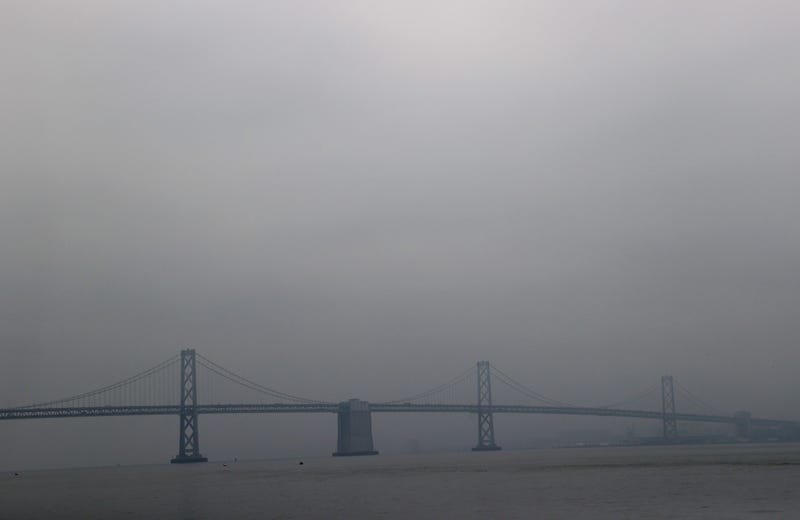
More of the Bay Area is set to contend with the effects of wildfire smoke this week than last as fires continue to burn throughout Northern California, although the region's air quality district once again stopped shy of issuing a Spare the Air Alert.
The Bay Area Air Quality Management District on Tuesday issued an air quality advisory for Wednesday, projecting winds in the Sacramento Valley to push smoke into the Bay Area that will result in air quality in the mid-to-high moderate range.
Air quality is not expected to be unhealthy based on federal standards, but the air district advised elderly people, children and those with respiratory illnesses to take extra precautions.
The National Weather Service Bay Area said Tuesday that, unlike last week, wildfire smoke is expected to increase both at the surface and aloft. Starting Tuesday night and lasting into Wednesday afternoon, the National Weather Service issued a Red Flag Warning for parts of the East and North Bay due to dry, gusty offshore winds blowing into the region.
PG&E began shutting off power for about 7,000 residents with staggered outages in Alameda, Contra Costa, Napa, Solano and Sonoma counties on Tuesday night due to the windy conditions.
The Dixie Fire, which has burned over 600,000 acres and prompted evacuation warnings and orders in Butte, Lassen, Plumas and Tehama Counties, was only 31% contained as of Tuesday morning. California Gov. Gavin Newsom on Tuesday declared a state of emergency in El Dorado County due to the Caldor Fire, which started over the weekend and has burned over 30,000 acres as of Tuesday night. The Caldor Fire is 0% contained.
In addition to the impact on air quality, recent research indicates wildfire smoke could exacerbate COVID-19’s spread. A Harvard study published this week associated as many as 19,500 additional coronavirus cases and 750 excess deaths with wildfire smoke last year in California, Oregon and Washington.

